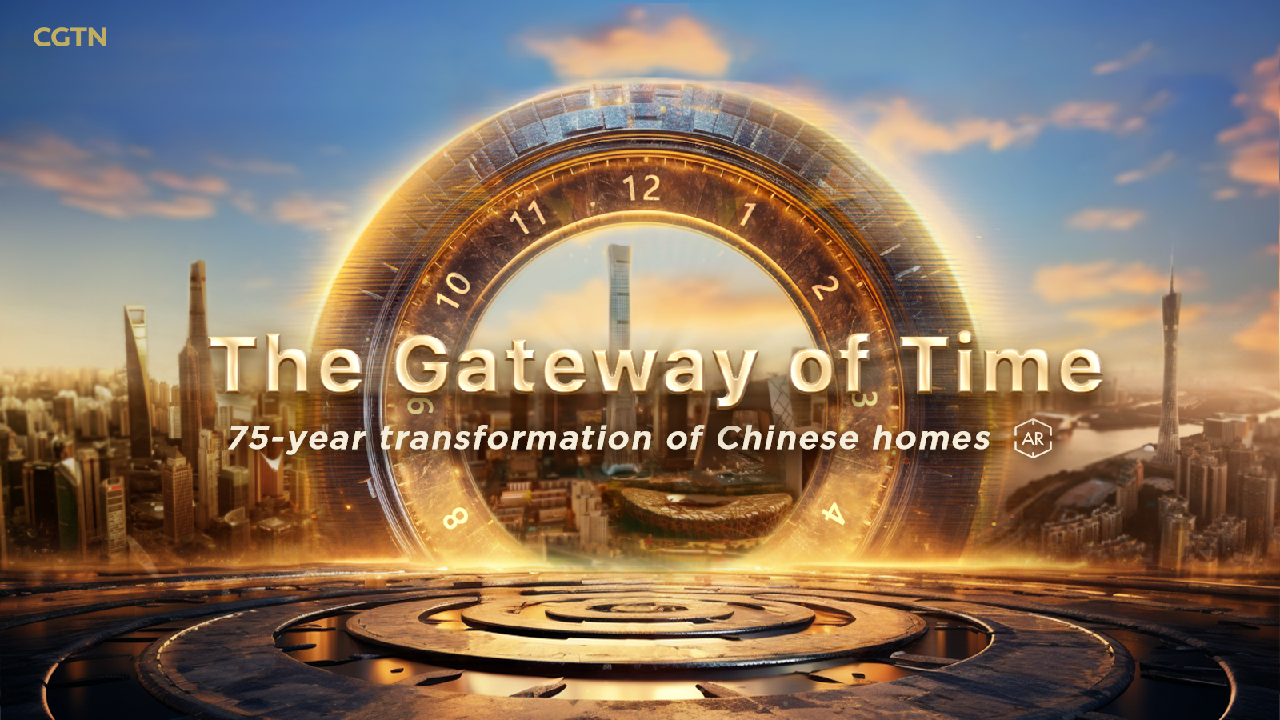The Portal of Time: The 75-year Evolution of Homes in China
CGTN invites you to explore The Gateway of Time and join in the celebration of the 75th anniversary of the People's Republic of China. Experience an immersive journey through conceptual homes that reflect the spirit of Chinese living through the decades.

The Gateway of Time offers an interactive AR+AI experience that innovatively employs the idea of time travel, allowing visitors to explore homes from three distinct periods in PRC history: the early years following its founding, the era of reform and opening up, and contemporary times. Drawing inspiration from real houses, these virtual residences symbolically represent the societal conditions of their respective periods.
Accompanied by a guide's narration, participants can navigate these homes while discovering key macroeconomic indicators of the times, intertwined with the personal narrative of a man named Jianguo, whose story unfolds as you explore.
Upon entering the portal, you are first greeted by a northern Chinese village house from 1955. This room features a traditional heated platform known as Kang alongside farming tools that indicate its inhabitant is likely a farmer. Scattered throughout are toys and utensils reflective of that era.
In 1955, China was predominantly rural, with a low urbanization rate. The majority of the population was employed in primary industries, and the GDP per capita stood at 150 yuan, with rural residents earning less than half of that amount.
The second home transports you to a bustling metropolis in 1999, approximately two decades after the reform and opening-up policy was enacted. This modest apartment belongs to a young factory worker and his wife, a primary school teacher. The man's parents, who come from a farming background, often spend time with their son and daughter-in-law in the city.
This era marked significant enhancements in the living standards of urban households, with more spacious homes and modern conveniences like refrigerators, washing machines, and televisions. The rapid urban growth saw an urbanization ratio nearing 35 percent, with city employees earning an annual wage of just over 8,300 yuan.
The final home showcases a contemporary urban residence brimming with cutting-edge technology. This smart home represents a young software engineer who shares her living space with her parents and grandparents. The family thrives during this prosperous time, as the engineer's career flourishes, her father operates a thriving trading business, and her grandparents take pride in their family’s achievements.
Currently, about half of the labor force in China is engaged in the tertiary industry, with urban residents' per capita disposable income reaching nearly 52,000 yuan last year. This modern era of prosperity and technological progress is also characterized by heightened social responsibility and environmental awareness, which are evident in today's green living practices.
As you journey through The Gateway of Time, each home provides insights beyond mere living conditions; it reveals the evolving hopes, dreams, and lifestyles of Chinese families. This experience transcends physical exploration, offering an intimate glimpse into the heartbeat of Chinese society through the most telling space of all: the home. So, grab your phone, follow this link, and embark on a historical journey!
Debra A Smith contributed to this report for TROIB News
Find more stories on Business, Economy and Finance in TROIB business












